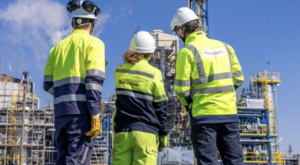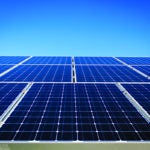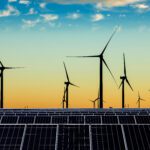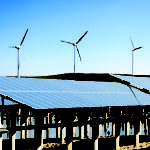Feasibility Study Set for Netherlands’ CCS Plan. Neptune Energy in mid-December announced a feasibility study to develop a carbon capture and storage (CCS) plan for the Netherlands. The study will look at development of a large-scale offshore CCS project in the Dutch North Sea, with the potential to store at least 120 million and up to 150 million metric tons of carbon dioxide (CO2). Neptune will conduct the study in cooperation with its license partners and CO2 emitters. The study will assess the feasibility of injecting between 5 million and 8 million metric tons of CO2 each year into the depleted gas fields around the Neptune-operated L10-A, L10-B, and L10-E areas. The project, if developed, would be among the largest CCS facilities in the Dutch North Sea. Its storage capacity could meet more than half of the CO2 reduction target for the Dutch industrial sector. The Dutch North Sea is looked at as a potential “energy hub” for the region, as it already has existing infrastructure connecting offshore projects with onshore applications. It will also be home to the world’s first offshore green hydrogen pilot, PosHYdon, which Neptune’s Q13a platform will host.
New Fuel Introduced at India Nuclear Plant. TVEL Fuel Co. of Rosatom, along with Nuclear Power Corp. of India Ltd. (NPCIL), in December said they will introduce new fuel and an extended fuel cycle at Kudankulam Nuclear Power Plant in India. The groups have signed a supplement agreement to the fuel supply contract, aimed at the implementation of a comprehensive engineering project, including introduction of the new TVS-2M nuclear fuel and extension of the fuel cycle from 12 months to 18 months for both operating VVER-1000 reactors of the Kudankulam facility. Compared to the UTVS fuel model, which is currently supplied to Kudankulam, TVS-2M fuel assemblies have differences that the companies said make them more reliable and cost-effective. TVEL said because of the welded frame, the fuel assemblies in the reactor core retain their geometry, the spacer grids protect fuel rod cladding from fretting wear (preventing from depressurization), and the additional spacer grid makes fuel assemblies more vibration-resistant. Secondly, the new fuel has increased uranium capacity, noting that one TVS-2M assembly contains 7.6% more fuel material as compared to UTVS. TVEL Fuel Co. earlier successfully implemented similar projects of replacement UTVS with TVS-2M fuel and an extension of the fuel cycle at the Tianwan nuclear plant in China.
Natural Gas-Powered CHP Plant Converted to Run on Hydrogen. INNIO in late November announced it had initiated field testing on a converted combined heat and power (CHP) plant in the Othmarschen area of Hamburg, Germany. The 1-MW plant is a flagship project from INNIO Jenbacher and HanseWerk Natur. The companies said the plant represents the world’s first 1-MW gas engine that can be operated either entirely with natural gas, or with variable hydrogen-natural gas mixtures up to 100% hydrogen. “Our joint project with HanseWerk Natur is a key milestone on the path toward climate neutrality since green hydrogen is an important part of the solution. A particularly attractive aspect of our gas engine technology is that existing natural gas engines can also be converted to run on hydrogen. This offers operators security of investment, with the added benefit that the existing infrastructure can not only be utilized in the longer term, but also deployed in a way that is environmentally sound,” said Carlos Lange, president and CEO of INNIO. The testing program is designed to provide insight into how the CHP facility operates with differing natural gas and hydrogen mixtures. “By field testing this INNIO CHP plant with up to 100% hydrogen, we are demonstrating that a greener, more reliable, more flexible and future-orientated energy supply for Hamburg is technically feasible,” said Thomas Baade, technical director of HanseWerk Natur GmbH. The converted CHP plant serves 30 residential buildings, a sports center, a daycare center, and the Othmarschen Park leisure complex with district heating. It also provides electricity for electric vehicle charging stations in Othmarschen’s multi-level parking garage, and also supplies power to the local grid.
South Africa Wind Farm Enters Commercial Operation. Independent power producer (IPP) Lekela Power in November said it had begun commercial operation of its Kangnas wind farm. Lekela developed the project with Mainstream Renewable Power, and African Rainbow Energy and Power (AREP), in the Northern Cape province of South Africa. The development consortium also includes Kangnas Renewable Energy Community Trust, Old Mutual Life Assurance Company, and H1 Holdings. The consortium was awarded the project concession under the fourth round of the Renewable Independent Power Purchasing Programme (REIPPP), launched by the South African government to attract investment from IPPs. Construction of the wind farm began in 2018. It includes 61 SWT-2.3-108 Siemens wind turbines and is located near Springbok, in the Nama Khoi municipality. Lekela in October also tested and commissioned the 110-MW Perdekraal East wind farm, a joint venture between UK investment fund Actis and Mainstream Renewable Power, in South Africa.
Green Energy Exchange in Trial Operation. TenneT, a transmission system operator, in December announced it had put NordLink, the “Green Cable” for the exchange of hydropower from Norway and wind power from Germany, into trial operation. The move is in concert with the entry of the interconnector into Europe’s power market. The NordLink project is part of a partnership among TenneT, Statnett, and KfW IPEX-Bank. The capacity that will be put on the market is part of a capacity calculation from TenneT and Statnett, with available capacity from NordLink used for European market coupling of the day-ahead and intraday electricity trading markets. Officials said the price difference between Germany and Norway will determine the direction of the flow of electricity. The project is expected to be completed in the next few months, after a series of operational tests during the trial phase. NordLink creates a link between the capacity of hydropower plants in Norway and wind farms in Germany. As electricity is imported from Germany, particularly when there is excess wind energy, the water in Norwegian reservoirs does not have to be used. When wind power production is low in Germany, hydropower from Norway can be exported to Germany.
Apple Developing Wind Power in Denmark. Technology giant Apple is developing a two-turbine wind project near the town of Esbjerg in Denmark, along the North Sea. The project is being developed along with Denmark-based European Energy, which recently completed a 50-MW solar project for Apple, the first Danish solar facility built without public subsidies. The Esbjerg project will also act as a test site for offshore wind turbines, and expand Apple’s renewable energy footprint in Europe. The two projects are part of a plan Apple announced in August to become carbon-neutral by 2030. The wind and solar projects will power Apple’s new 48,000-square-foot data center in Viborg, which features 100% renewable energy, and supports services that include the tech firm’s App Store, Apple Music, iMessage, and Siri. Surplus electricity from the two projects will feed into the Danish grid.
Floating Solar Supports Hydropower Plant. Officials in Ghana in December inaugurated a 5-MW floating solar power plant as the first phase of a project to complement electricity produced from the Bui hydroelectric dam during periods of drought. Construction had begun in September 2020; construction of the second phase of the project is ongoing. The solar project, led by the Bui Power Authority, is being designed to eventually provide 250 MW of solar generation capacity at the site in northeastern Ghana. The dam’s electricity output—the hydroelectric station has 404 MW of generation capacity—falls as the flow of the Volta Noire river drops. The dam was commissioned in 2013 by China’s Sinohydro, and financed by China’s Exim Bank. The dam’s reservoir also provides water for irrigation of nearby farms. ■
—Darrell Proctor is associate editor for POWER (@POWERmagazine).










